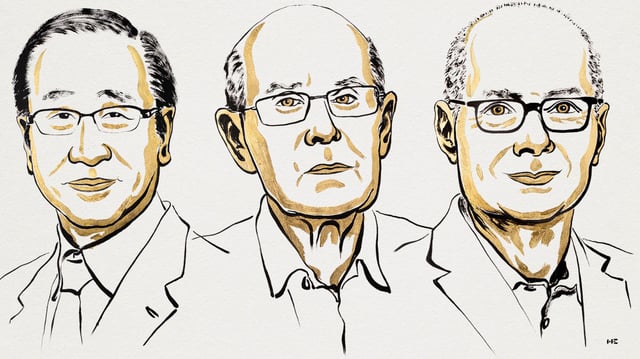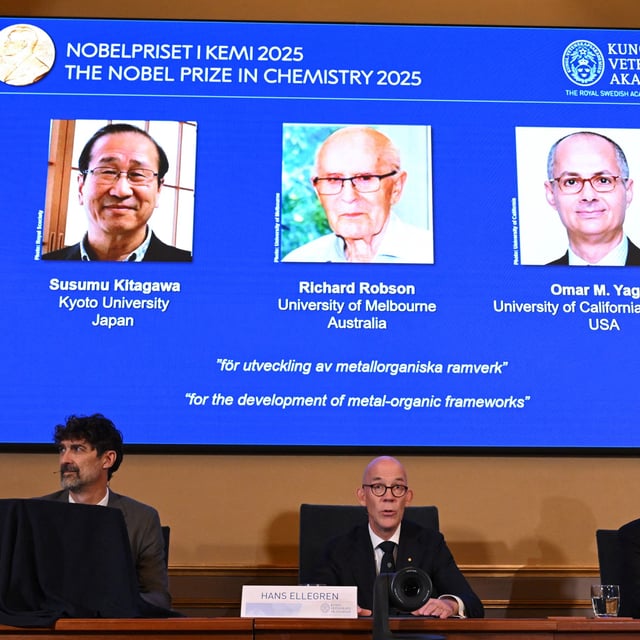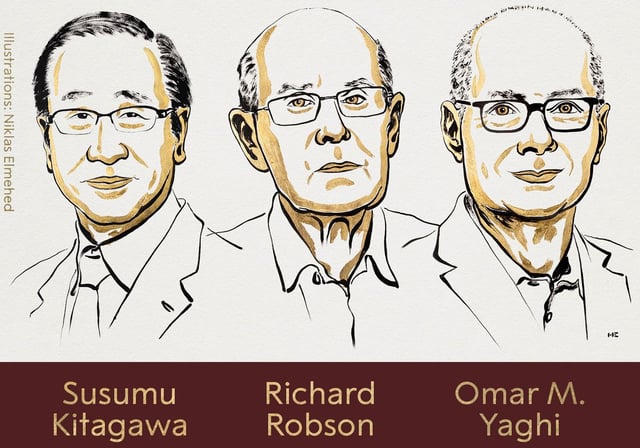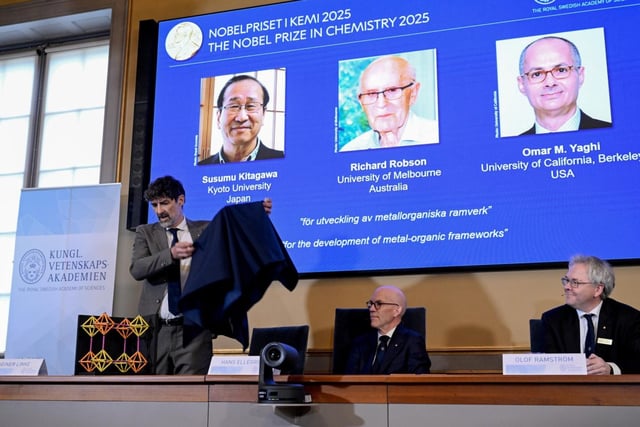Overview
- Announced in Stockholm on October 8, the Royal Swedish Academy of Sciences named the trio as laureates, who will share 11 million Swedish kronor.
- Metal–organic frameworks link metal ions with organic molecules to form ordered, highly porous crystals, described by the committee with analogies such as a football pitch of surface area in a sugar‑cube‑sized sample.
- Richard Robson initiated the framework concept in 1989, Susumu Kitagawa demonstrated gas uptake and flexibility in the early 1990s, and Omar M. Yaghi later created stable, designable MOFs including MOF‑5.
- Researchers have since reported tens of thousands of MOFs with demonstrated uses that include harvesting water from desert air, capturing carbon dioxide, storing toxic gases, removing PFAS, and storing hydrogen.
- Industry interest is growing with early trials for semiconductor toxic‑gas containment and carbon‑capture deployments, while the laureates hold posts at Kyoto University, the University of Melbourne, and UC Berkeley.



